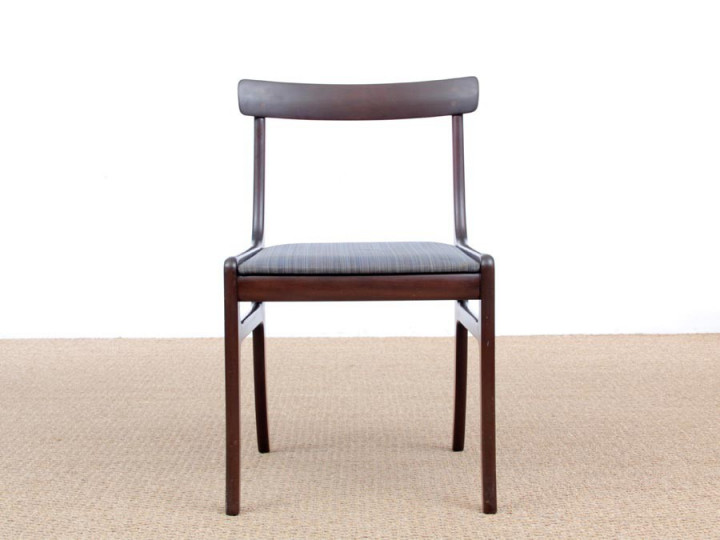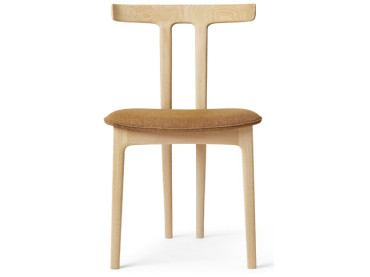Mid-Century modern scandinavian set of 6 dining chairs model Rungstedlund in mahogany by Ole Wanscher
-
Ole Wanscher
-
Poul Jeppesen
- DV171022
Sold
Scandinavian set of 6 chairs by Ole Wanscher for P. Jeppesen, model Rungstedlund, in mahogany. Design 1967. Year of production 1970’s.
Referenced by the Design Museum Danmark under number RP01086. Original cover in horsehair. Come with sign of wear. Can be changed on demand + €120/chair
Rungstedlund is the former home of the famous Danish writer Karen Blixen (1886-1962), where she was born and died. It is located in Rungsted Kyst on the seaside, north of Copenhagen. This is the furniture of the house that inspired Ole Wanscher for the creation in 1967 of the Rungstedlund line, consisting of a full dining room table, chairs and armchairs, sideboard and cabinet.
| Year | 1960's |
| Condition | Excellent vintage condition1960's |
| Dimensions | H 77, D 46, W 44 cm. H seat 44 cm |
| Material | Mahogany |
| Style | Classique Vintage |
| Origin | denmark |
| Fournisseur | Poul Jeppesen |
Ole Wanscher
Ole Wanscher (1903-1985), was born in Copenhagen in 1903 and was an architect and professor of architecture with furniture designs as his specialty. He came to shape Danish furniture, both as an active designer and as a master teacher. His furniture designs are now considered to be modern classics - sophisticated and functional with an exquisite attention to detail.
Construction and form was of the utmost importance to Ole Wanscher, treating furniture design as if it was a branch of architecture. He studied under Kaare Klint at the Royal Danish Academy of Fine Arts and also worked for the master himself from 1924-1927, before becoming an independent achitect specializing in furniture design. He later followed in Kaare Klint's footsteps as a professor at The Royal Dansih Academy of Fine Arts with a master in furniture design.
In 1958, the Danish newspaper Politiken wrote the following about the outstanding quality and spirit of Ole Wanscher's products: 'Owning a Wanscher-chair is an adventure every day, and will be so even serveral hundred years from now, for this is how long it lasts.'
Ole Wanscher created his best known products primarily in the period between the late forties and early sixties. He took great interest in industrially produced high quality furniture and designed serveral pieces with thiss particular aspect in mind. It was the familiar philosophy of 'design for everyone'. However, his finest work was made in close collaboration with reowned master cabinetmakers.
Furthermore, while traveling through Egypt and Europe, Ole Wanscher studied furniture design. He embraced these impressions, was inspired by them and and brought to them his very own sensibility. He also authored several books, including "The History of the Arts of Furniture" and "Five Thousand Years of Furniture".
Characteristic of Ole Wanscher's design is a quest for slim dimensions and resilient forms. His chairs often employ both slender and slightly curved armrests, which rise in an elegant tip before continuing directly to the floor; as is the case with his well known 'Colonial Chair'. Classic and yet singularly modern at the same time.



















